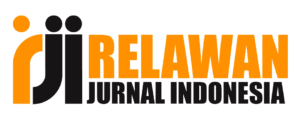KOMPOSISI, KELIMPAHAN DAN KEANEKARAGAMAN FITOPLANKTON DI PULAU SALAH NAMA SUNGAI MUSI SUMATERA SELATAN
DOI:
https://doi.org/10.31851/sainmatika.v16i1.2863Keywords:
Composition, Abundance, Diversity, Phytoplankton, Island One NameAbstract
Pulau Salah The name is also called Banjar Island is located in Banyuasin 1 Kelurahan Mariana Ilir Sungai Musi Sumatera Selatan. Area of Island Salah Name about 170 ha. Phytoplankton is one of the parameters of water fertility. Algae or phytoplankton can act as one ecological parameter that can describe the condition of a waters and is also an important biotic component in the metabolism of water bodies, since it is the primary link in the food chain of aquatic ecosystems. The purpose of the study was to provide information on the composition, abundance and diversity of phytoplankton in South Sumatra's Wrong Island. The research was conducted on Pulau Salah Nama, sampling was conducted in 5 stations. The study was conducted in August 2016, November 2016 and January 2017. The study found 3 classes of phytoplankton namely Bacillariophyceae, Chlorophyceae and Cyanophyceae. The highest composition is found in the Bacillariophyceae class. The abundance of phytoplankton ranges from 4.2 × 10 3 cells / l to 2,34 × 10 5 cells / l. The phytoplankton diversity index in Pulau Salah Nama is 0-3 belonging to category 1 <H '<3 is said to be the stability of the moderate biota community.
References
Adjie,S., Samuel., & Subagja. (2003). Kelimpahan dan Keragaman Plankton di Danau Arang-Arang, Jambi. Jurnal Penelitian Perikanan Indonesia, Vol9(7): 1-7.
APHA (American Public Health Association). (2005). Standars metdods for the examination of water and wastewater. Maryland : United Books Press Inc.
Badan Pusat Statistik Pemerintah Daerah Sumatera Selatan. (2009). Sumatera Selatan dalam Angka.Palembang :BadanPusatStatistik, 448.
Basmi. (1999). Planktonologi Chrysophyta-Diatom. Bogor: Penuntun Identifikasi Fakultas Perikanan dan Kelautan Institud Pertanian Bogor.
Basmi, J. (1988). Perkembangan Komunitas Fitoplankton Sebagai Indikasi Perubahan Tingkat Kesuburan Kwalitas Perairan. Tesis IPB. Bogor.
Fachrul, F. M. (2007). Metode Sampling Bioekologi. Jakarta: BumiAksara.
Fauziah, S.M ., Ainun, N.L. (2015). Identifikasi Mikroalga dari Divisi Chlorophyta di Waduk Sumber Air Jaya Dusun Krebet Kecamatan Bululawang Kabupaten Malang.Bioedukasi.Vol 8.20-22 hal.
Hynes, H.B.N. (1972). The Ecology of Running Water.University of Toronto Press. Toronto.
Goldman CR., and Horne AJ., 1994, Limnology, Mc. Graw Hill Book Co. USA
Ludwig, JA, Reynold, JF. 1988. Statistical Ecology. A. Primer on Method on Competing: Jhon Willey and Sons.
Reynolds, C. S. (1984). The Ecology of Freshwater Phytoplankton. Cambridge
University Press. Cambridge.
Richmond, A, 2005., Microalgal Culture, Biotechnology and Applied Phycology, Blackwell Publishing.
Sachlan, M. (1980). Planktonologi. Fakultas Peternakan dan Perikanan UNDIP. Semarang. 103 pp.
Samudra,S.R., T.R.Soeprobowati., M.Izzati. (2013). Komposisi, Kemelimpahan dan Keanekaragaman Fitoplankton Danau Rawa Pening Kabupaten Semarang.BIOMA Vol.15 No.1.Hal.6-13.
Sulisetijono. 2009. Bahan Serahan Alga. Malang: UIN Malang.
Welch, P. S. (1952). Limnology.Second edition. McGraw Hill International Book Company. New York.
Whitton, B. A. (1975). River Ecology.Blackwell Scientific Publications. London : Oxford.








